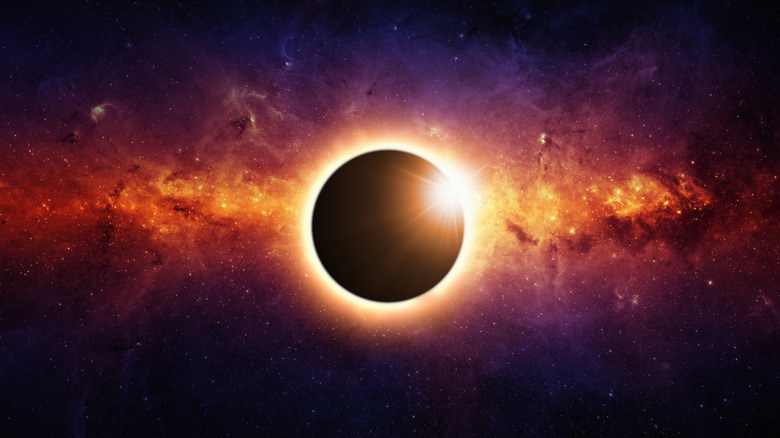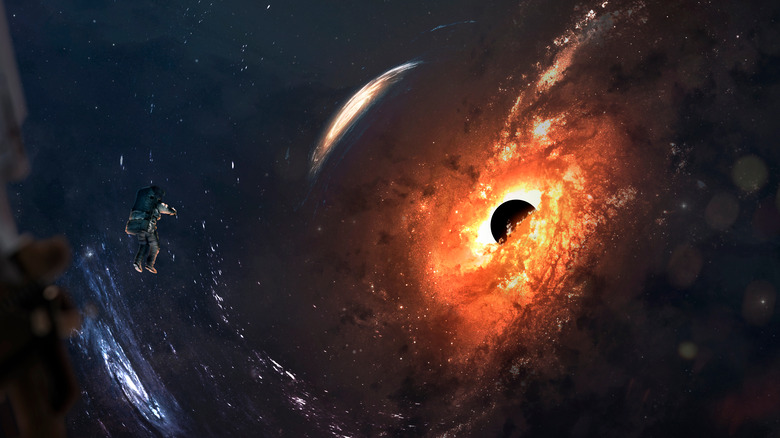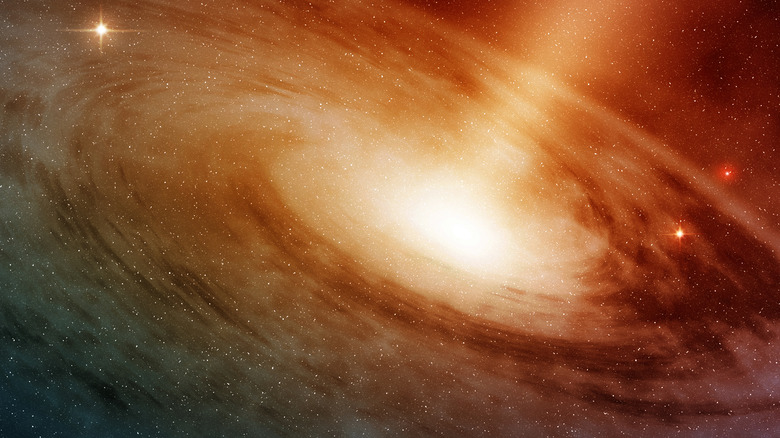The Theoretical Suns With Black Holes Inside
"Hang my head, drown my fears, till you all just disappear..." We're betting you didn't expect to hear a Soundgarden quote at the top of this article. But take a second look at the title: "suns with black holes inside." Definitely sounds like "Black Hole Sun" to us. Who knew they Chris Cornell and the gang were astrophysics fans back when they released that legendary track in 1994?
In scientific circles, black hole suns are known as "quasi-stars." Quasi-stars, as New Scientist explains, are theoretical; we have no way of knowing if they ever existed. They would have formed only in the early stages of the universe when matter was densely packed together, and could never exist again because the universe continues to expand. We would only know quasi-stars by their corpses. In stellar terms, we call a corpse a "black hole." And what kind of corpse would a quasi-star leave behind? The supermassive black holes at the center of galaxies.
Supermassive black holes represent a peculiar astrophysical problem: They're simply too big for the age of the universe (13.8 billion years, per Space). Stellar black holes — the kind that form when a star collapses — are actually pretty small in size. They could never, for instance, get as large as Sagittarius A in the center of the Milky Way. Supermassive black holes have to form by a different method entirely, and the one method that fits is a quasi-star: a sun with a black hole core.
Too big to exist
Let's do a quick refresher on typical "stellar" black holes (via National Geographic). As a star consumes hydrogen, helium, and so on, its gaseous pressure pushes outward. It also radiates all the pretty energy that gives us life. Meanwhile, a star's gravity pulls everything inward. If the outward pressure eventually wins, a star goes boom and we get a big explosion — a supernova. If gravity wins out, then the whole thing collapses and we get an infinitely dense central point (a black hole) with enough gravity to trap the fastest thing in the cosmos, light.
But for all their mass and gravity, black holes aren't too, too big. The small black hole V723 Monoceros ("Unicorn") has a mass three times larger than our sun (per Astrobites), but is only 17.2 kilometers across (about 10.5 miles), as Gigazine states. According to Sci-News, the gravity of this black hole is strong enough to distort the shape of a nearby red giant star and create a bulge on its side.
Black holes like this can grow over time, and have no upper size limit. To do so, they either have to suck away the energy of a nearby star (like black hole M33 X-7, per Nature), or collide with other black holes (like black hole GW190521, as the Max Planck Institute for Gravitational Physics shows on YouTube). This takes an incredibly long amount of time, though — so long that enormous supermassive black holes simply shouldn't exist.
Black hole core, starry outer shell
Supermassive black holes, unlike stellar black holes, are cosmic behemoths lurking at the center of galaxies. Sagittarius A at the center of the Milky Way, for instance, has a mass 4.3 million times greater than our sun, as Sci-News says. The aforementioned "Unicorn" black hole? Only three times more massive. How did supermassive black holes get so big, then? There's an enormous gap between the sizes of typical black holes and those found at galactic centers.
The educational YouTube channel Kurzgesagt has a great summary at this point. When the universe was young, smaller, and its matter much more dense than it is now, stars could have grown to a much bigger initial size. They could have been so big, and with such dense cores, that the cores could have collapsed into black holes. These cores and their inward-sucking gravity could have struck a balance with their exterior's outward-pushing pressure. A black hole core encased in a starry outer shell could have burned bright for millions of years. During that time, the black hole would have devoured as much energy as possible and grown enormous. How big? Big enough to be today's supermassive black hole, or at least a decently sized seed suitable for collisions with, and consumption of, other black holes.
No worries about such colossi heading to Earth and sucking people into the sky, though, like Chris Cornell wished in "Black Hole Sun." We'd just be seared to a cinder.


